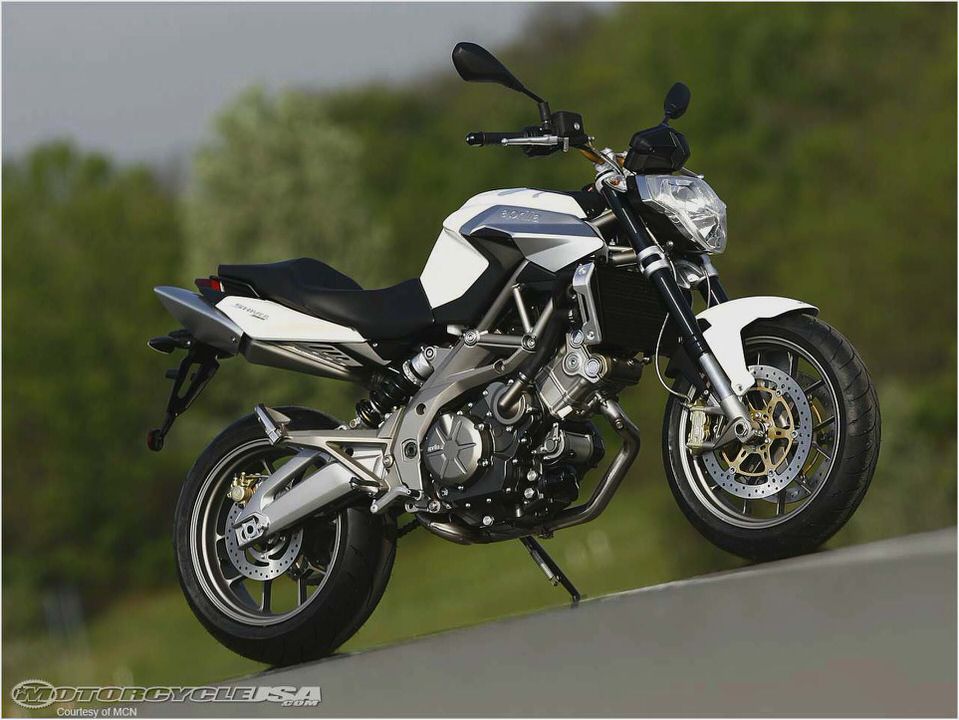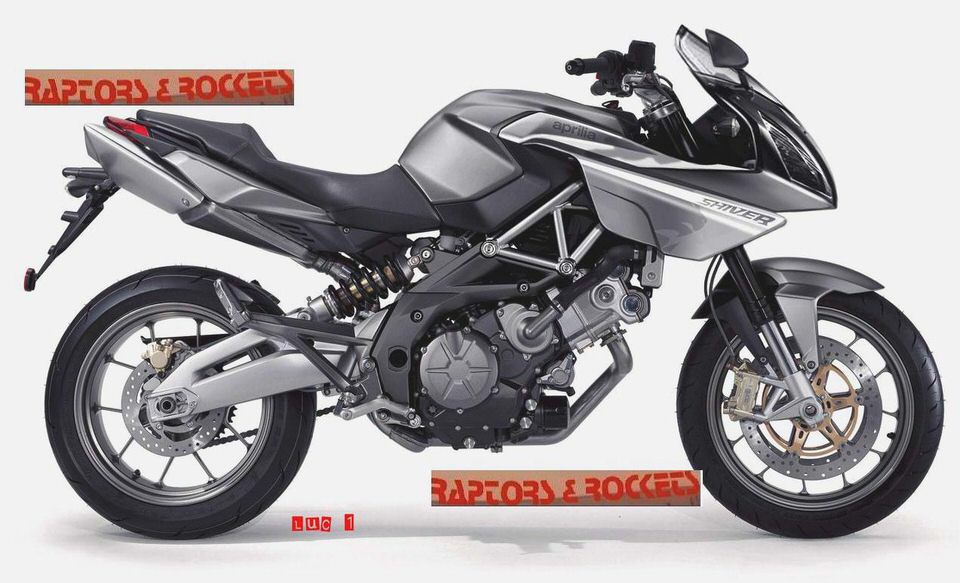
146_0812_12_z+2008_aprilia_SL750_shiver+kent_kunitsugu.jpg
Unless you’re blind, it shouldn’t come as a surprise that the age of the UJM, or Universal Japanese Motorcycle, has long since passed (of course, if you are blind what you’re doing on a motorcycle is an entirely different story). Nowadays the choices in two-wheeled transport have become so specialized that trying to pick just one bike to carve the canyons and take a trip to the store is all but an exercise in futility.
Or is it?
While the offerings from Japan may leave one empty in his or her quest for an all-around motorcycle, leave it to Italy to do its part in satisfying the niche. This time by way of the Aprilia SL 750 Shiver. The Shiver is an all-new departure for Aprilia. From the onset the Shiver platform was to be incorporated entirely in-house.
The design team was faced with a challenge as an emphasis was placed on a middleweight naked-style bike that could satisfy the needs of both the everyday commuter and the weekend warrior-without being mistaken for its more popular sibling, the Tuono. Perhaps the most significant impact of this decision to take everything in-house would be a departure from long-time engine builder Rotax, resulting in an engine design that is entirely Aprilia. It would prove to be quite an undertaking, but one that the company is banking on.
Stripped Down
Aprilia’s first attempt at its own proprietary powerplant is a 749cc, 90-degree V-twin with four valves per cylinder and dual overhead cams. To help keep the engine as compact as possible, Aprilia took a cue from the Rotax playbook and incorporated a chain-driven intake cam while the exhaust side is driven via gears-not unlike the engine in the Buell 1125R. Perhaps the most intriguing feature on the Shiver is its use of ride-by-wire technology.
This allows the throttle bodies to open based on a number of parameters including, but not limited to, engine speed, gear selection, atmospheric pressure and the degree of butterfly opening compared to the speed of throttle movement. Sound confusing? Here’s more. The primary benefit of the electronic throttle control is to facilitate the use of Aprilia’s own power mode selector, similar to the system found on Suzuki’s GSX-R models.
The Shiver’s three modes are Sport, Touring and Rain. As shown in the accompanying dyno chart, Sport mode offers full power all the time, Touring mode slightly reduces power output and throttle response until full throttle is applied, and Rain reduces power output further still. We’ll cover how the modes work in the real world later.
An aluminum trellis-style frame is also all new for the Shiver. Design cues for the new frame were gathered from a number of areas, including the RXV and SXV off-road and supermotard race teams. Ultimately, a rigid frame with minimal chassis flex wound up being the best option.
The Shiver is billed as the budget Aprilia that is perfect for a wide range of uses. Normally what budget translates to is bottom-shelf suspension in the name of meeting the desired price point. This is no different.
Up front lies a non-adjustable 43mm inverted fork, while the rear shock, offering only preload and rebound adjustability, is offset and mounted laterally to the swingarm without the use of linkages. Bringing everything to a halt are the same 320mm rotors used on the Mille and Tuono, clamped by four-piston, radially mounted calipers. A 245mm rotor and single-piston caliper sit in the rear.
Steel-braided lines come standard.
Does Budget Bike = Lousy Performer?
The first thing you’ll notice when throwing a leg over the Shiver is that the vertically challenged need not apply. All of our testers have inseams hovering around 30-inches and the reach to the ground left us on the tips of our boots. The tall seat height is compounded by a slightly flat saddle that further exacerbates the issue.
Once on your way the Shiver is remarkably liveable. The handlebars are at a comfortable position (though some preferred it be angled in toward the rider more) and the footpegs are at a low and forward position. This makes for an upright seating position that places very little weight on the wrists, making the jaunt to your local twisties as pleasant as the road itself.
We use the term budget loosely on the Shiver as its $8999 price tag doesn’t exactly fall under the budget category, but it is on the lower end of the price scale as far as road-going Aprilias are concerned. The electronic wizardry that comes standard on the Shiver is no doubt partially to blame for the lofty price tag, and is also an area that had all testers a little perplexed.
Starting the bike is standard fare, but the starter button also serves as the engine kill switch when flicked towards the rider. Further, it also acts as the medium to switch between the three operating modes. To do this, once the bike is running press and hold the ignition-without any throttle. After two seconds release the switch and toggle between the different modes by tapping the starter.
The new mode is selected if no activity occurs within two seconds or if the throttle is applied. Intuitive this system isn’t, especially considering that the left handlebar has a thumb switch to choose between its own different menus-where one would think to find the different power modes.
The engine itself is a good fit for the class. In sport mode the 45 ft-lb of torque help leap the bike out of corners and the nearly 75 horsepower definitely feels more steamy than the middleweight mainstay-the Suzuki SV650. Touring mode gives a more neutered attitude, while Rain mode borders on castration. Although one would think that the fly-by-wire system would make for a consistent ride, the on/off throttle application was anything but.
The throttle was a bit inconsistent and made it a bit less user-friendly, commented Trevitt, It wasn’t so much that it was abrupt, but it was just a bit different every time. There’s a nice spread in the gearing with the easily flickable six-speed transmission, though some complained of missing shifts regularly.
We took an SV650 along for our usual canyon ride and the differences made themselves known immediately. The Shiver is a good handling bike overall. Its wide handlebar gives it great leverage to toss the bike from side to side. Get a handle on the characteristics of the engine and chassis and they both beg to pick up the pace. The problem here is that when things do get spirited the rest of the bike falls behind; it starts when the low footpegs quickly touch down.
After, the suspension starts to feel out of sorts with the front and rear components unsettling at different rates depending on the road surface. Though the SV is also equipped with a budget suspension, both ends tend to compliment each other well and bounce at generally the same rate. Compared to the SV, the Shiver just felt taller and ‘tippy’ in the corners, said The Boss.

On the opposite end of the spectrum, the brakes almost overwhelm the rest of the bike with strong stopping power. Feedback to the lever is great as well, though initial bite could be a little stronger. Nonetheless, cautious application of the binders when leaned over is a must.
What Does The Future Hold?
Overall the Shiver has the makings for a great bike. It displays the craftsmanship that is typical to all Aprilias, but it still needs some further refinement to reach its full potential. This is a bike that can nearly do it all, but despite its attractive appearance and comfortable riding position, at this price one expects more from a motorcycle.
Little things like the lack of a spring-loaded detent with the turn-indicator switch often left us paranoid as to whether or not the blinkers were on. The gauge cluster also left us annoyed with how complex a normally simple device was to operate. We could sense that the engine and chassis wanted to give us more in the canyons but were being held back.
After pondering over the Shiver we started to wonder why Aprilia didn’t just add on a worthy suspension and create a little brother to the Tuono. Our best guess is that this engine and chassis combo could be the basis to many other platforms that Aprilia will release in the future-a more sport oriented model with proper suspension being one of them. If that’s the case then we can’t wait to ride it.
Until then the Shiver will be a great idea that just fell short.
’08 Aprilia SL750 Shiver
Test Notes
+ Comfortable seating position
+ Strong middleweight engine
– Gauge cluster is anything but intuitive
– Suspension gets overwhelmed quickly
- Aprilia RSV4 Factory News
- 2009 Aprilia Mana 850 Road Test Rider Magazine
- Aprilia RSV4 R Sport Bike 2012 – Price In India
- Puig For the bike model Aprilia SHIVER 750 2012 Puig
- Crutchlow on verge of Ducati debut in desert (MotoGP) – Worldnews.com

